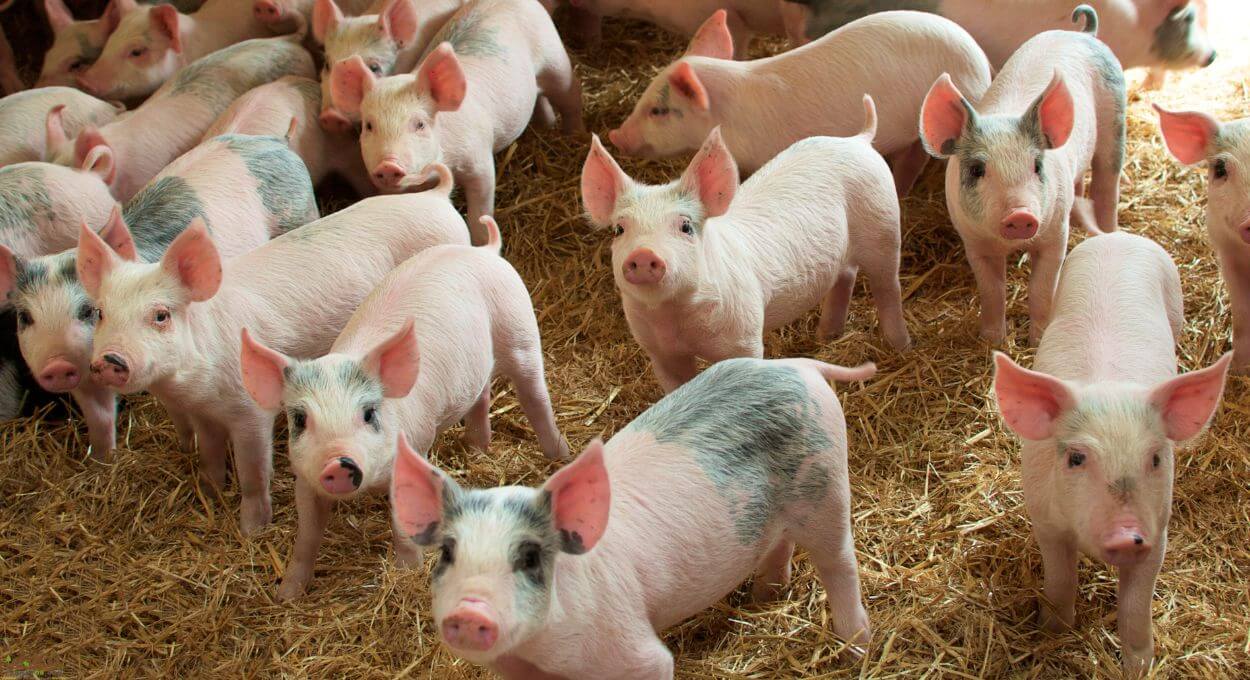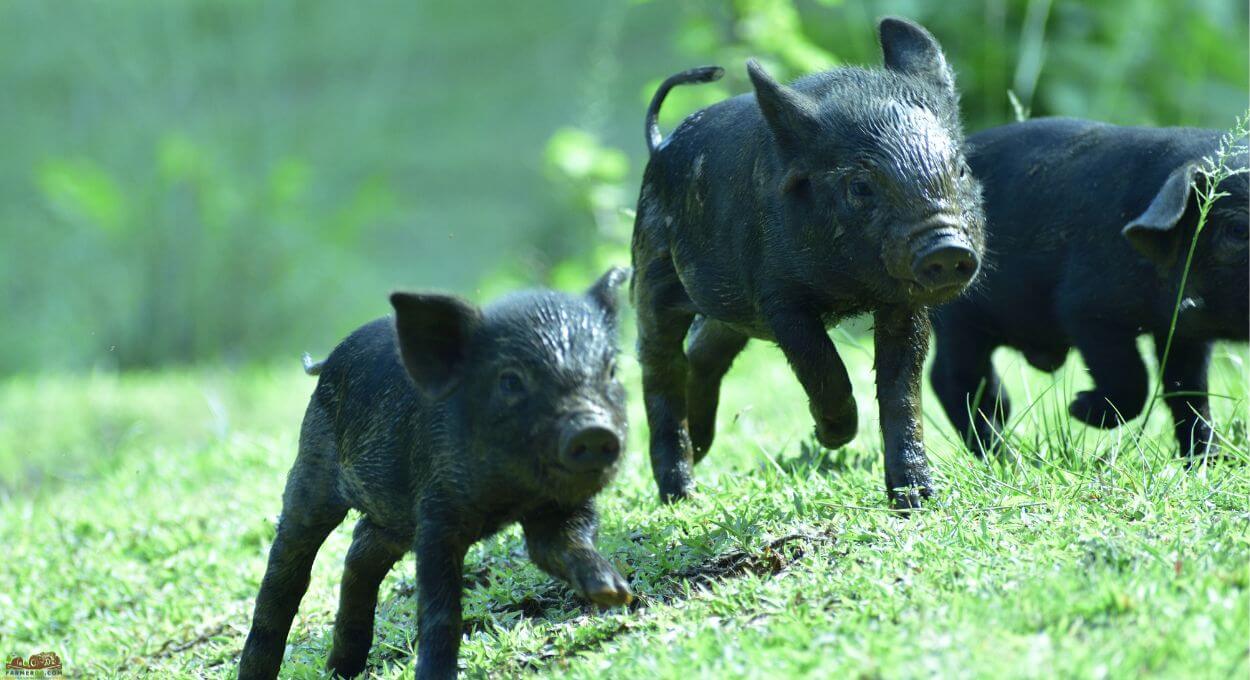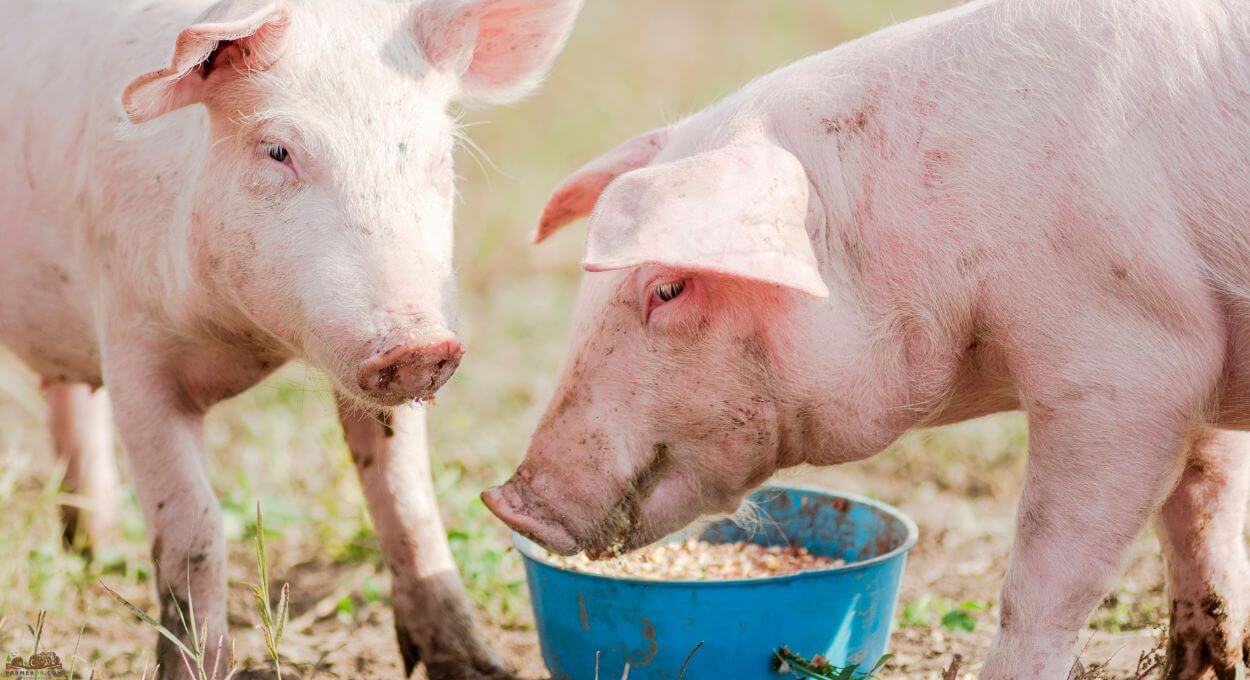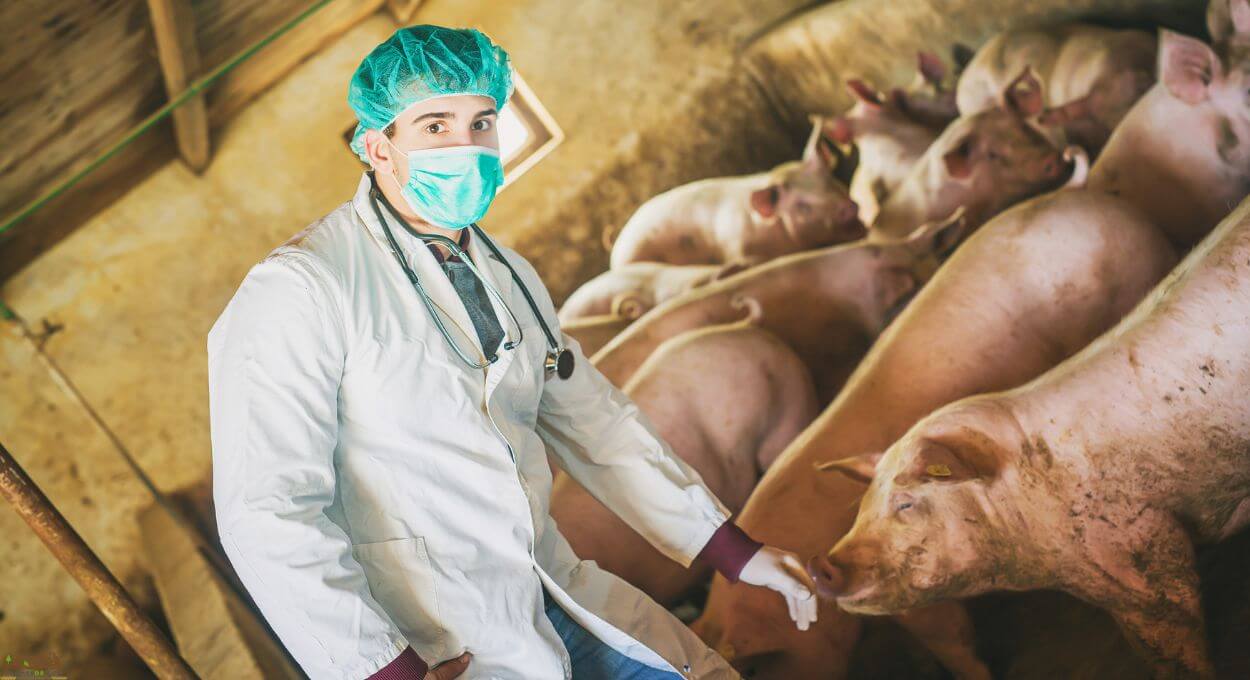
Becoming a pig owner can be an exciting experience. However, if you’re new to pig ownership, it’s important to be aware of the common mistakes that many new owners make.
These mistakes can include not feeding the pigs properly, not taking care of their living area, or neglecting important aspects like heating and temperature control during winter for piglet births. With a little knowledge and preparation, you can easily avoid these mistakes.
In this article, you will find important tips and guidance to help you take care of your pigs and avoid these common mistakes.
By following these tips, you’ll be able to give your pigs the proper care they need and have a successful experience as a pig owner.
Contents
1. Research and Knowledge about Pigs
1.1 Lack of research about pigs
One common mistake new pig owners make is not making sufficient research on what pigs are, how to raise them, and what it means before bringing one home.
Pigs are unique creatures with specific needs, physical characteristics, and behaviors that should be understood before deciding to buy and raise them. Unlike dogs, cats, horses, or other animals, pigs possess distinct instincts and may present certain challenges.
The lack of research about the animal itself can create unrealistic expectations and lead to disappointment, and may even cause the new owner to question the suitability of these animals.
1.2 Insufficient research on the specific pig breed
There are numerous types of pigs, and what new pig owners sometimes overlook is conducting research on them.
Each pig breed is unique and has different behaviors, needs, and physical characteristics. Furthermore, each breed offers distinct qualities and end products. Therefore, it is crucial to understand the various breeds and choose one that aligns with your specific goals.
For example:
– Do you want a pig with a larger litter size and excellent mothering skills? Then, you can closely take a look at the Large White pig, which is known for having these qualities.
– Do you want one with a faster growth rate? Research breeds like Hampshire pigs, Landrace pigs, and Yorkshire pigs.
– Do you want lean meat or one with fat content? For extremely lean meat, the Piétrain pig can be explored. For well-marbled meat with lots of fat, you can take a look at the Mangalica pig.
Overall, avoid this mistake by taking the time to inform yourself about the available pig breeds while considering your ultimate goal.
1.3 Not learning about pig diseases and common health issues
Another aspect that new pig owners often ignore is learning about pig diseases and common health issues.
But why is this important? Once you become a pig owner, you have to ensure the health of your pigs and be able to identify when they are ill or unwell.
Having knowledge about diseases and health issues makes it easier to recognize symptoms and allows you to take immediate action and measures.
Early detection of illness in pigs can have significant benefits, including:
- Saving your pig from severe illness or even death by providing prompt and appropriate treatment.
- Preventing the spread of diseases to other animals. Given that pigs live all in the same place, the rapid spread of a virus or infection among them can cause serious harm. No pig owner wants to see multiple pigs fall sick.
By familiarizing yourself with the most common pig diseases and those specific to the breed you own, you will be better prepared to take action against pig diseases and health concerns, ultimately minimizing losses.
Be prepared and take the time to read about the common pig diseases, their symptoms, and what to do in the initial phase.
2. Buying the pigs
2.1 Jumping into buying breeding pigs
Why is it a mistake for a new pig owner to buy breeding pigs instead of feeder pigs?
The main reason is the lack of experience. When you first become a pig owner and start raising pigs, it’s not recommended to jump directly into breeding these animals.
As a new pig owner, your initial focus should be on familiarizing yourself with pigs in general.
Feeder pigs provide a great opportunity to get practical experience and learn how to take care of pigs, manage them, and understand their needs. Working with feeder pigs also allows you to see whether you truly want to breed pigs on your own in the future.
Also, breeding pigs are more expensive to purchase and requires more effort to raise. Taking on the responsibility of breeding pigs right away can be very difficult, especially for someone new to pig ownership.
Feeder pigs, on the other hand, require a lower level of maintenance. This allows you, as a novice, to learn the basics of pig care and husbandry without adding the complexities, difficulties, and responsibilities that come with pig reproduction.
2.2 Buying too many pigs
Many new pig owners are so excited and often make the mistake of purchasing too many pigs right from the start. This can quickly become a problem for the new owner. Too many pigs from the beginning lead to a lot of workloads.
Each pig requires proper attention, space, feeding, and healthcare, making it difficult for an inexperienced owner to effectively manage them all at once.
To avoid this common mistake, it is recommended to begin with just two pigs initially. This allows you to gradually learn and become familiar with the daily tasks and responsibilities involved in pig care.
By starting small, you can easily adjust to the workload without becoming fatigued or stressed right from the beginning. Once you feel more confident and comfortable in managing two pigs, you can then consider adding more pigs to your herd.
2.3 Underestimating the size of pigs
For various reasons, new pig owners make the mistake of underestimating the size of the pigs.
When they are piglets, they appear incredibly small, making it difficult to imagine just how large pigs can grow. This is completely understandable for those without firsthand experience. Still, it is important not to be deceived by their small appearance as piglets.
Even though pigs are classified into small, medium, and large sizes, they can become quite massive.
Take, for example, the Large Black pig breed. The piglets of this breed can fool anybody, as they may seem small and manageable. But these small piglets quickly develop into massive Large Black pigs with a weight ranging between 700 to 800 lbs.

Try not to fall into the ‘cuteness’ trap and be aware of the potential size that pigs can reach.
3. Accommodating the Pigs
3.1 Not preparing the living space
Another frequent mistake among new pig owners is their failure to prepare the living space in advance for the pigs or piglets they purchase.
It is wrong to buy the pigs and then decide where to place them. This approach is definitely a no-no. It is crucial to have the living space ready before bringing the pigs home.
If you do not prepare proper accommodations for the pigs then the entire situation can quickly lead to chaos.
Why?
Because pigs are intelligent animals and certain breeds may be more challenging to control.
Ideally, you should prepare a specific enclosed area exclusively for the pigs. This dedicated space will provide them with the necessary security and ensure better management and care.
3.2 Not using proper fencing for piglets
When preparing for the arrival of piglets, new owners often fail to use appropriate fencing to prevent escapes. It is a big mistake to use fencing with large holes, as piglets can easily escape and wander away from their designated living area.
I made this mistake myself when I was a novice, using cattle panels that had big gaps, and it resulted in my piglets running freely and exploring the surroundings.
To avoid such issues, it is essential to choose hog panels or other fencing alternatives with smaller holes that effectively keep piglets within their designated space.
3.3 Not installing an electric fence
Not installing an electric fence when raising pigs can have serious consequences.
Many new pig owners mistakenly assume that pigs do not require an electric fence or believe that a traditional fence is sufficient. This is not the case with pigs.
Pigs are intelligent animals, and without a proper fence, they can easily escape and wander into neighboring properties. Their natural curiosity and foraging instincts make them great at finding ways to break free. Even worse, they can teach other pigs in the herd how to escape as well because they remember how they did it.
An electric fence is the only effective barrier that pigs learn to respect over time through association. Installing one ensures that your pigs stay within a safe and secure territory.
3.4 Failing to provide the right environment for pig
An aspect that is often overlooked when starting a pig farm is the importance of creating a suitable environment for the pigs.
Providing the right environment for pigs means offering them access to shade, a wallow or shower, and shelter. These are essential for meeting the pigs’ needs and ensuring their health and well-being. Without these aspects, their health and growth can be affected.
To give you a specific example here, the common health issue in Gloucestershire Old Spots pigs is heat stress. These pigs can be at risk of death when exposed to high temperatures, so it’s crucial to provide them with a method to cool down, such as a wallow, a shelter with controlled temperature, or a shaded area.
Ensure that the living space for your pigs incorporates all of these elements.
3.5 Using a wrong water source
You will need a good plan for the water source. Many choose to opt for buckets, open pools, or open bathtubs to fill them with water.
What’s the mistake here?
Well, the pigs drink from these water sources initially, but then they use them as great places to play and bathe. As a result, the water gets dirty and becomes an improper water source for pigs, or even worse, your pigs may not drink it and become dehydrated.
A good water source for pigs is something that is closed but still allows them to drink. You can even improvise cheap solutions and make your own pig waterer; it doesn’t have to be very sophisticated.
For example, you can use a closed barrel with a pig nipple water system.
You should always check the water source to ensure it is clean and accessible to pigs.
4. Feeding
4.1 Underestimating the costs of feeding a pig

A significant number of individuals often underestimate the costs associated with feeding a pig.
Raising pigs is not a cheap journey when you consider various expenses such as purchasing, providing shelter, electric fencing, veterinary care including pig vaccines, and the substantial amount of feed they require.
On average, a pig consumes approximately 5 to 7 pounds of feed per day. If you choose to raise two pigs, this means 10 to 14 pounds of feed daily and a monthly total of 300 to 420 pounds. That is a lot.
Even if you opt to raise a pasture pig, such as the Idaho Pasture pig with great grazing abilities, it is necessary to feed them a similar amount of feed twice a day. None of the pasture pigs can sustain their weight only through grazing, so regular feeding remains essential.
Not to mention that during the cold season, when grazing options are limited, pigs become entirely dependent on the feed you provide them.
Regardless of their breed, pigs require a substantial amount of feed to maintain their health, support natural growth, and this crucial factor must be taken into consideration before starting a pig farm.
4.2 Offering an improper diet
Pigs, like any other animal, have specific dietary needs that must be fulfilled to ensure healthy growth. Typically, pigs require proteins, easily digestible carbohydrates, as well as vitamins and minerals.
I have seen many times people feeding pigs with complex carbohydrates like donuts, bread, fried potatoes, and so on. This practice results in overweight pigs with excessive fat. The goal is not to have a fat pig, but rather a well-built pig with a good ratio of lean meat to fat.
It is important to choose the right sources of carbohydrates that provide sufficient energy without promoting excessive weight gain in pigs.
When it comes to vitamins and minerals, it is essential to carefully examine the feed given to the pigs. Some feeds may not contain an adequate amount of these nutrients, necessitating the purchase of separate mineral mixes or premixes to supplement their diet. Pigs require essential vitamins such as A, D, E, and various B vitamins, as well as minerals like calcium, phosphorus, zinc, iron, and selenium.
If pigs do not receive the proper nutrients, they may become ill or not grow as expected.
4.3 Not maintaining a consistent feeding schedule
If you provide pigs with an irregular feeding schedule, it can lead to digestion issues. This is problematic because untreated digestion issues can become worst and develop into more serious illnesses, requiring veterinary intervention.
Once you purchase pigs, it is important to establish a consistent feeding routine to help them stay healthy and have good digestion.
Typically, pigs should be fed twice a day, once in the morning and once in the evening. During the rest of the day, if pasture is available, they can freely graze and root.
Not socializing enough with your pig is definitely a mistake. Pigs are social animals, and that’s why socialization is crucial when interacting with them.
Insufficient socialization can make pigs more challenging to manage and control due to the stress and unfamiliarity they experience.
However, when you take the time to introduce yourself to them, engage in communication, pet them, or offer belly rubs, they become more at ease with you and human interaction in general. This, in turn, makes them more obedient, playful, and easier to handle.
This comes in handy during situations such as health checks because it reduces the stress associated with procedures and human contact.
Let’s take the Vietnamese Potbelly Pig’s grooming and cleaning as an example. To maintain good health, it is important to keep their eyes and waxy ears clean. If the pig is used to the process, it can be very easy and fast for both you and the pigs.
5.2 Not training the pigs
Not training your pigs when they show incorrect behaviors is not a good decision.
By allowing them to continue with undesirable behavior, they will become increasingly challenging and they will not respond to your commands. Additionally, they may develop destructive tendencies.
It is essential to address and correct their behavior by providing appropriate training. Pigs are capable of learning various commands, including “stay” and “sit.”
6. Maintenance and Veterinary Care
6.1 Underestimating the workload involved in pig maintenance
Sometimes people assume that taking care of pigs only involves providing them with food, but it’s not that simple.
There are many tasks involved in maintaining the health of pigs. Apart from providing them with a good environment, proper feed, and a continuous source of fresh water, you need to closely monitor their well-being. Some pigs require grooming, which means spending time on that as well.
Keeping the pigs’ living area clean is crucial. Regularly cleaning their environment is important not only to maintain cleanliness but also to minimize the risk of diseases and control odor. It’s important to note that pigs can have a strong odor, so it’s recommended not to keep them too close to the house.
Managing pig manure is another consideration. You need to decide how you plan to handle it, whether using it for your land or disposing of it properly.
If you have pigs in an open pasture, ensuring they always have something to graze on becomes important. This may involve rotating pastures and implementing pasture management practices.
Remember, there is always something to do when caring for pigs.
6.2 Not having a plan to meet the medical needs of pigs

When starting to raise pigs, it is important to establish a relationship with a veterinarian who is available when needed.
Pigs require regular veterinary care, including health checks and monitoring to assess their health and prevent potential illnesses or diseases. They also need vaccinations and procedures such as castration, particularly for piglets should happen within two weeks of birth.
Moreover, having a veterinarian already familiar with your pigs is great in case of emergencies. They can provide immediate assistance through visits or offer advice on what to do.
A veterinarian can also provide nutritional guidance to ensure that your pigs receive all the necessary nutrients, thereby preventing nutritional deficiencies and imbalances. They have the expertise to advise on proper pig diets.
Overall, establishing a relationship with a veterinarian before raising pigs is crucial for regular healthcare, emergency situations, and nutritional support.
7. Butchering
7.1 Not having a plan for butchering the pigs
You should avoid being unprepared for the butchering time.
If you do not have a plan and your butcher is not available, you may find yourself stuck with the pigs for a longer period, during which they will continue to grow and fatten more than desired.
To avoid such situations, it is important to be proactive and create a plan well in advance, considering the age or weight at which your pigs should be butchered.
Ideally, schedule an appointment with a butcher at least a month or more in advance, but this timeline may vary depending on your location. Keep in mind that there may be peak seasons or busy periods for butchers, so take that into consideration as well.
Having a well-thought-out plan ensures that the butchering process is conducted efficiently.
We encourage our readers with pig farms or extensive experience in raising pigs to share additional ideas that are not included in this list. By doing so, we can help new pig owners avoid mistakes we have made in the past.
Also, if you have any related questions, please feel free to ask using the comments form below.

